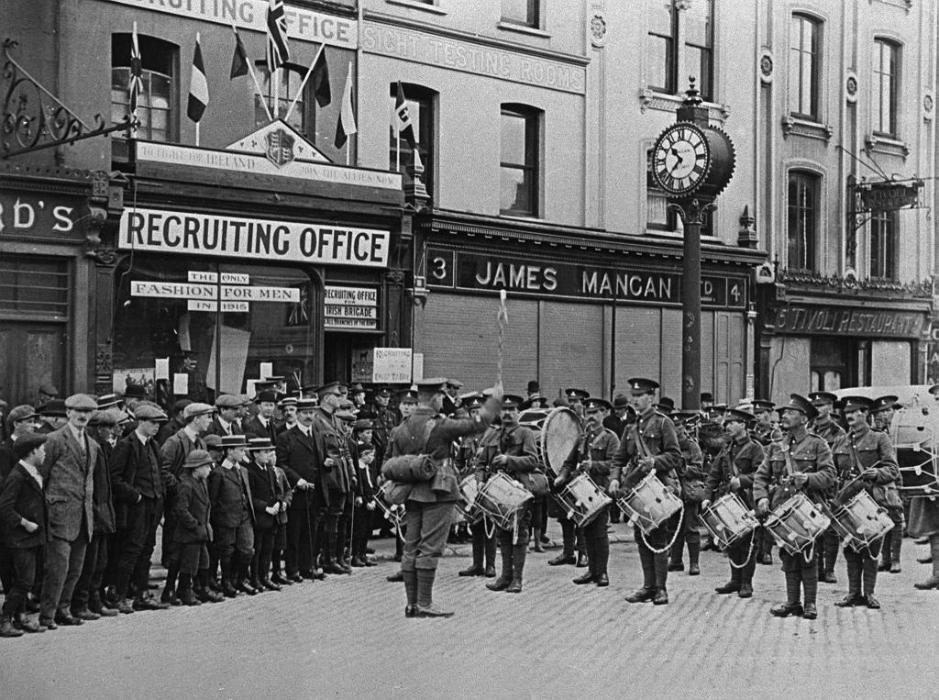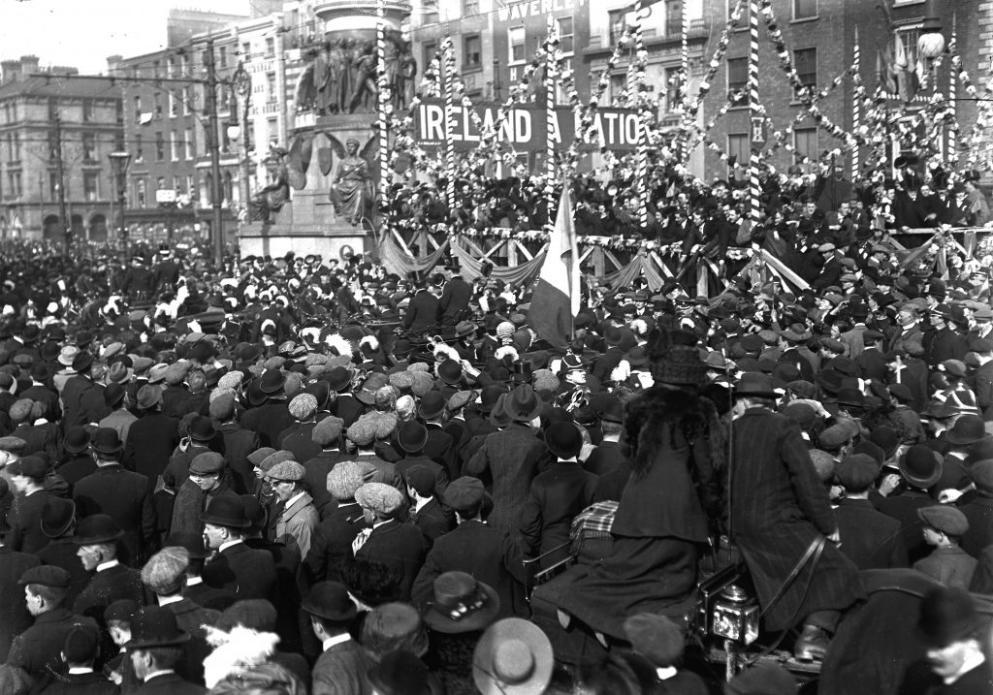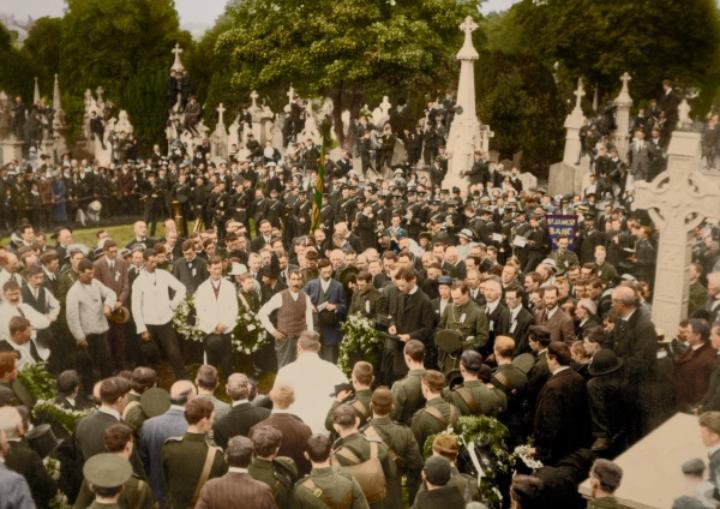- Home
- Collections
- Atlas Resources for Schools
- Cork Fatality Register
- Mapping the Irish Revolution
- Mapping IRA Companies, July 1921-July 1922
- Mapping the Burning of Cork, 11-12 December 1920
- Martial Law, December 1920
- The IRA at War
- The Railway Workers’ Munitions Strike of 1920
- The Victory of Sinn Féin: The 1920 Local Elections
- The War of Words: Propaganda and Moral Force
- The IRA Offensive against the RIC, 1920
- De Valera’s American Tour, 1919-1920
- The British Reprisal Strategy and its Impact
- Cumann na mBan and the War of Independence
- The War Escalates, November 1920
- The War of Independence in Cork and Kerry
- The Story of 1916
- A 1916 Diary
- January 9-15 1916
- January 10-16, 1916
- January 17-23, 1916
- January 24-30, 1916
- February 1-6 1916
- February 7-14, 1916
- February 15-21, 1916
- February 22-27, 1916
- February 28-March 3, 1916
- March 6-13,1916
- March 14-20, 1916
- March 21-27 1916
- April 3-9, 1916
- April 10-16, 1916
- April 17-21,1916
- May 22-28 1916
- May 29-June 4 1916
- June 12-18 1916
- June 19-25 1916
- June 26-July 2 1916
- July 3-9 1916
- July 11-16 1916
- July 17-22 1916
- July 24-30 1916
- July 31- August 7,1916
- August 7-13 1916
- August 15-21 1916
- August 22-29 1916
- August 29-September 5 1916
- September 5-11, 1916
- September 12-18, 1916
- September 19-25, 1916
- September 26-October 2, 1916
- October 3-9, 1916
- October 10-16, 1916
- October 17-23, 1916
- October 24-31, 1916
- November 1-16, 1916
- November 7-13, 1916
- November 14-20, 1916
- November 21-27-1916
- November 28-December 4, 1916
- December 5-11, 1916
- December 12-19, 1916
- December 19-25, 1916
- December 26-January 3, 1916
- Cork's Historic Newspapers
- Feature Articles
- News and Events
- UCC's Civil War Centenary Programme
- Irish Civil War National Conference 15-18 June 2022
- Irish Civil War Fatalities Project
- Research Findings
- Explore the Fatalities Map
- Civil War Fatalities in Dublin
- Civil War Fatalities in Limerick
- Civil War Fatalities in Kerry
- Civil War Fatalities in Clare
- Civil War Fatalities in Cork
- Civil War Fatalities in the Northern Ireland
- Civil War Fatalities in Sligo
- Civil War Fatalities in Donegal
- Civil War Fatalities in Wexford
- Civil War Fatalities in Mayo
- Civil War Fatalities in Tipperary
- Military Archives National Army Fatalities Roll, 1922 – 1923
- Fatalities Index
- About the Project (home)
- The Irish Revolution (Main site)
Chapter 2. Ireland prior to 1916
The domestic mood in Ireland prior to 1916 was inextricably linked to the Great War being fought in Europe.
Remember, the country was still overseen by a British Viceroy. While initial support had been evident across most of nationalist and all of unionist Ireland, it fell rapidly when people realised that the War would not be over by Christmas 1914 as promised.
Video: Ireland’s New Viceroy, Lord Wimborne, arrives at Kingstown, Dublin, in 1915
While wartime censorship masked the real scale of the growing disenchantment with the war prior to 1916, evidence of a growing alienation abounded. It took many forms and included an increasing number of prosecutions for anti-recruiting activity, the stagnation of the National Volunteers and the growing willingness of influential members of the Catholic church in Ireland to speak critically of the government.
And there was good reason for them to be critical, for to most nationalists the war was all pain and no gain.

Recruitment in Cork in the early years of World War I.
John Redmond staked his political career on a rapid and early victory in the war and had abandoned the traditional hostile attitude of Irish nationalists towards the British Army and encouraged his countrymen to enlist as volunteers.
By 1916, 90,000 Irish Volunteers had joined the British Army

A Home Rule rally on O’Connell Street, Dublin.
In return, he expected the government to implement the Home Rule Act of 1914. It had just been passed by Westminster shortly after the outbreak of war and if the war ended quickly, Redmond was certain that Britain would give sovereignty to Ireland.
Redmond’s gamble had failed, however. The advent of trench warfare on the Western Front in late Autumn 1914 removed all possibility of a swift Allied victory and it was clear Home Rule would not be dealt with until the war was over.
Video: Ireland And the First World War - The Home Rule Crisis
In the place of the promised land it seemed nationalists were merely doomed to suffer growing casualties, increased taxes, and the heightened contempt of their republican adversaries.
The death in New York on June 29, 1915 of the veteran Fenian Jeremiah O’Donovan Rossa served as the lightning rod for these anxieties.
His body was returned to Ireland, and was afforded what, in effect, was a full state funeral by the Catholic archbishop of Dublin (who, though he had little truck with Fenianism, was increasingly hostile to John Redmond).
Hundreds of thousands of nationalists, ranging from the most moderate constitutionalists to the most extreme physical force republican, turned out to honour the passage of the remains through the streets of Dublin en route to their interment in the patriots’ section of Glasnevin cemetery.

Dublin, 1 August 1915 - The funeral of Fenian, Jeremiah O’Donovan Rossa
Padraig Pearse gave a famous graveside oration which offered an unequivocal endorsement of O’Donovan Rossa’s ‘direct action’ and an equally clear rejection of Redmond’s adherence that Home Rule provided a pathway to independence.
The fuse for 1916 had been well and truly lit.
